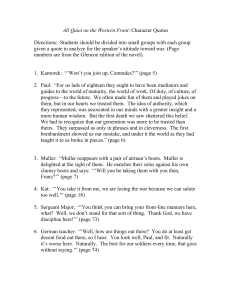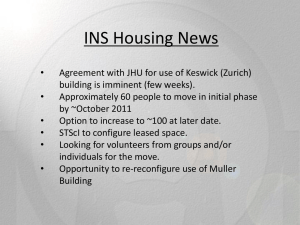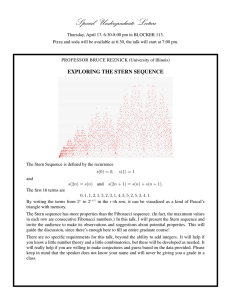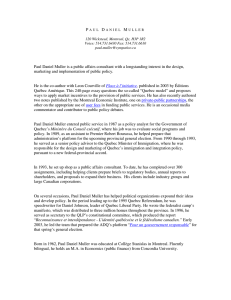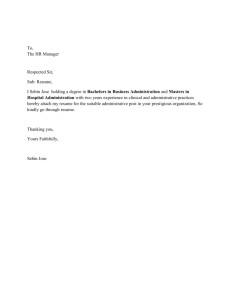EVOLUTION OF THE LINEAR NO THRESHOLD MODEL OF RADIATION INJURY
advertisement
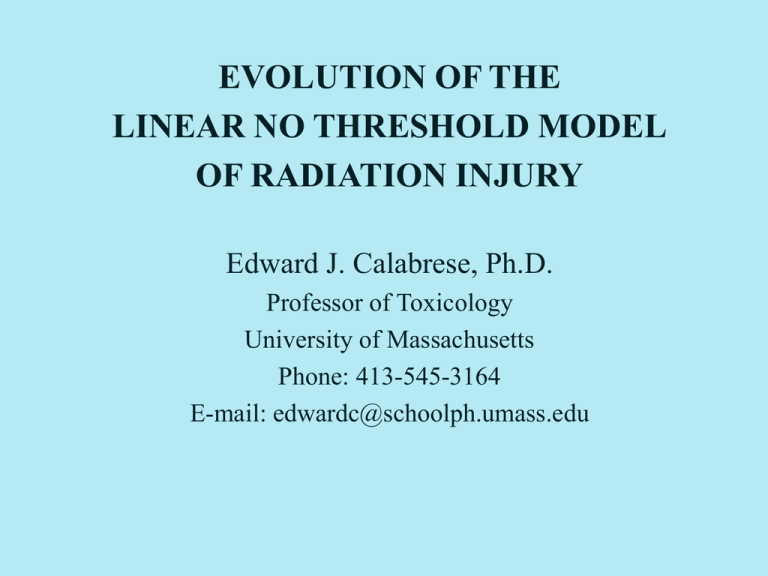
EVOLUTION OF THE LINEAR NO THRESHOLD MODEL OF RADIATION INJURY Edward J. Calabrese, Ph.D. Professor of Toxicology University of Massachusetts Phone: 413-545-3164 E-mail: edwardc@schoolph.umass.edu Axel Olson and Gilbert Lewis, UCal Berkeley, Physical Chemists (1928) First proposed an LNT model to account for evolutionary changes following Hermann Muller’s 1927 discovery that X-rays can induce mutations in fruit fly germ cells. Thus, initial LNT model was created to provide an explanation for evolutionary biology rather than providing an application for risk assessment. Muller and Physicist, Mort-Smith proposed that background doses of ionizing radiation could only account for ~ 1/1,300 of the observed normal background mutation rate. This estimation suggested that evolutionary change could not be adequately explained by background radiation. While the background radiation was inadequate for an evolutionary explanation, Muller believed the linearity relationship was likely to be true. Muller developed a belief in the concept of an LNT dose response model for ionizing radiation and mutation based on the findings of several students in his lab that assessed responses at extremely high doses. Starting in 1930, Muller began to use the term “Proportionality Dose Response” and soon transformed the proportionality response into a “PROPORTIONALITY RULE”. This phrasing dominated mutation literature during the 1930s. 1935 – Timofeeff-Ressovsky, Zimmer, and Delbruck Created the single-hit mechanism of mutagenesis, based upon target theory of radiation physicists/biologists. The single-hit mechanism was mathematically demonstrated to account for the features of the LNT model-thus integratively linking the two concepts. This development resulted from the cooperation of radiation geneticists and leading physicists. Hermann Muller used his Nobel Prize lecture to demand the rejection of the long-standing threshold dose response model for genomic mutation. Muller also advocated that the LNT model should replace the threshold model. This speech was given enormous publicity and served to focus regulators, the media, and the scientific community on public health concerns with ionizing radiation even at very low doses. Research at the University of Rochester lead by Curt Stern was used to strongly support the concept of LNT for radiation induced mutation. Muller was a consultant to Stern for this research. The publications based on this research were critical in providing a scientific basis for a switch from a threshold to an LNT model. These findings profoundly influenced the BEAR I Committee. 1956 – Recommended the adoption of the LNT model for ionizing radiation induced genomic mutation, rejecting the threshold model. This recommendation was soon generalized to somatic cells for cancer risk assessment. Recommendations of the BEAR I Committee provided the foundation for cancer risk assessment for chemicals and radiation worldwide. This is the most significant action in the history of environmental risk assessment. Conclusion The BEAR I Committee recommendation was improper. It was the result of an orchestrated deception by leaders of the radiation genetics community, Curt Stern and Hermann Muller. The principal goal of these individuals was to support the LNT model and advocate its use in risk assessment. Manipulation of key Manhattan Project mutagenicity study interpretations; Muller’s deception at Nobel Prize lecture; Muller and Stern’s continuing deception in years leading up to BEAR I; Major impact on the radiation genetics community; Major impact on the BEAR I Committee, affecting the views, conclusions, and recommendations. Muller knew of the significant threshold supporting study by Caspari and Stern prior to his Nobel Prize speech. This conclusion is based on letters exchanged between Stern and Muller. Muller recognized the challenge to LNT and strongly supported study replication. Muller found no technical issues with this paper following a detailed review. Letter exchanges indicate that Muller’s views were similar five weeks before and five weeks after his Nobel lecture. Stern tried to suppress the significance of the threshold findings in the discussion of the paper, by demanding that their data not be accepted until it could be determined why the response was not linear. Following the internal review by Muller, of the Caspari and Stern paper, the threshold conclusion was dropped. Replication studies directed by Stern were problematic because of extremely low control group values, making the data “un-interpretable”. This happened on several occasions. Stern acknowledged these issue in a classified publication for the Atomic Energy Commission. Stern published a meta-analysis of the five Manhattan project experiments. He now used the un-interpretable data, treating it as normal. Such a treatment led to a linear interpretation. The Caspari controls: His controls were challenged by Stern. Stern claimed that Caspari’s control group values were aberrantly high. However, the literature and unpublished data by Muller supported Caspari. The basis of these conclusions are found in letters, cables, and manuscripts of Stern and Muller. In the early 1950s, Muller repeatedly challenged the Caspari findings claiming that his control group values were aberrantly high. Yet, the data of Muller fully supported the Caspari interpretation. LNT resulted from deceptive practices by leaders of the radiation genetics community. These deceptions have remained in place for six decades. Entire regulatory programs and public education activities are based upon such deceptive historical practices. The US National Academy of Sciences BEAR I Committee Misled the World Community on Cancer Risk Assessment, and its dominating influence continues to the present.
